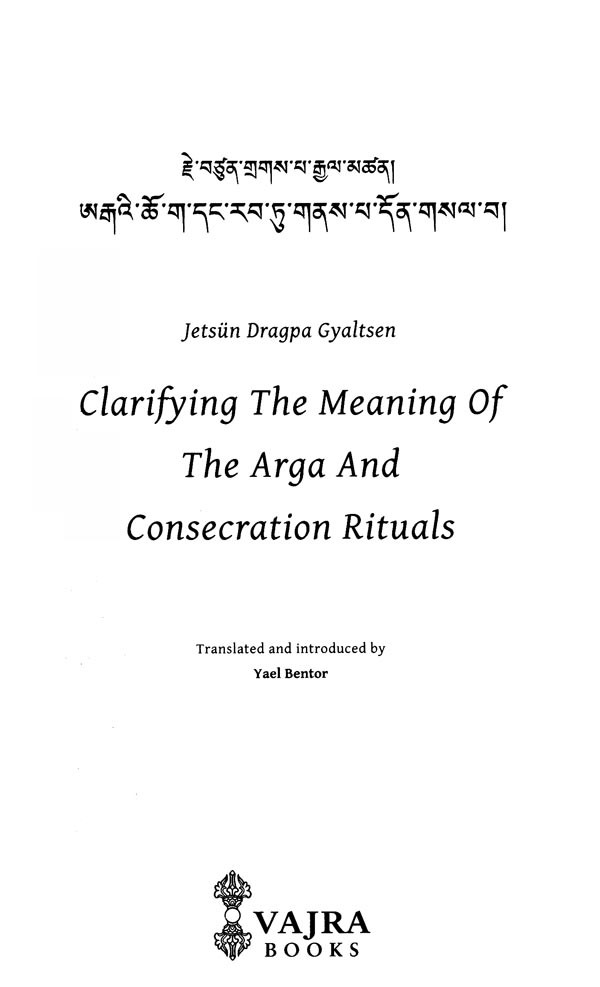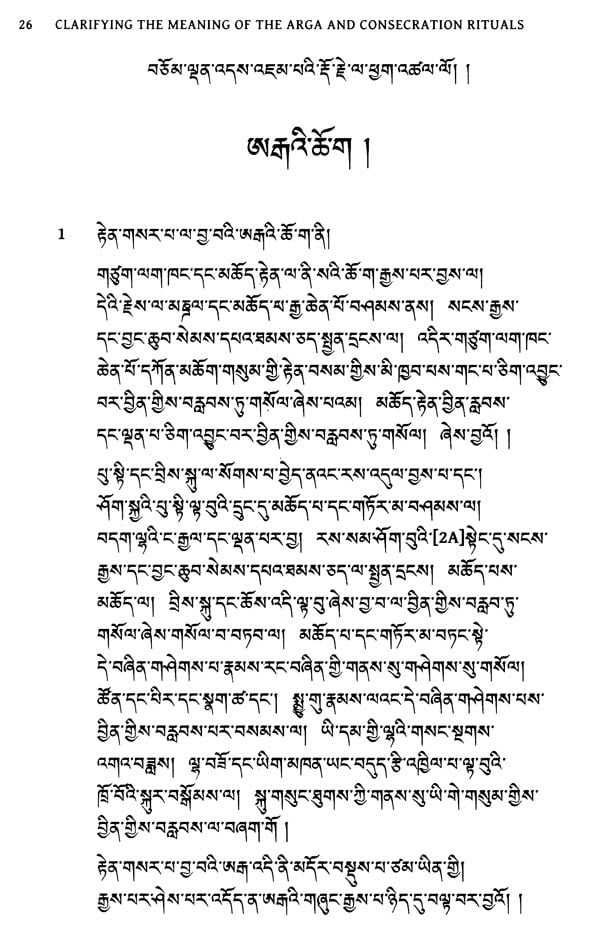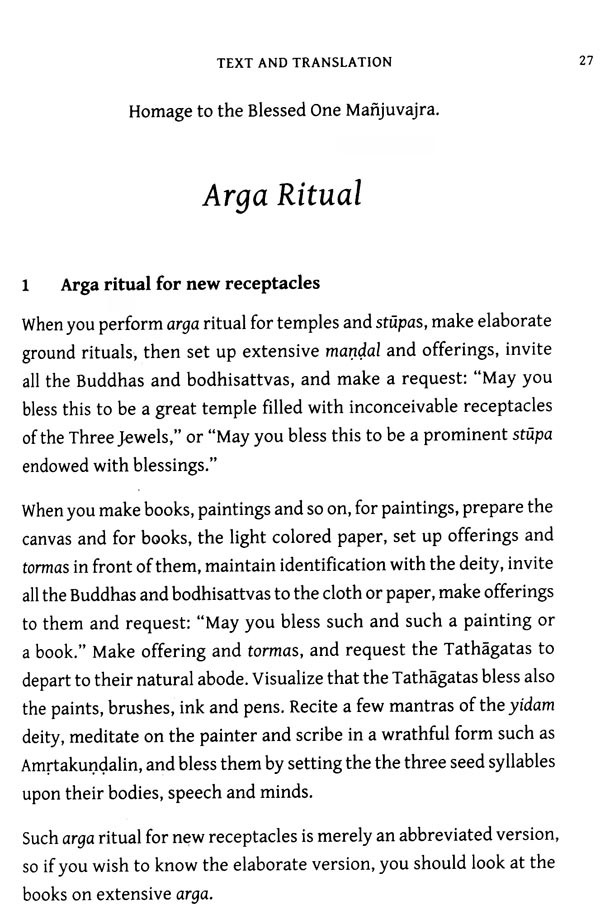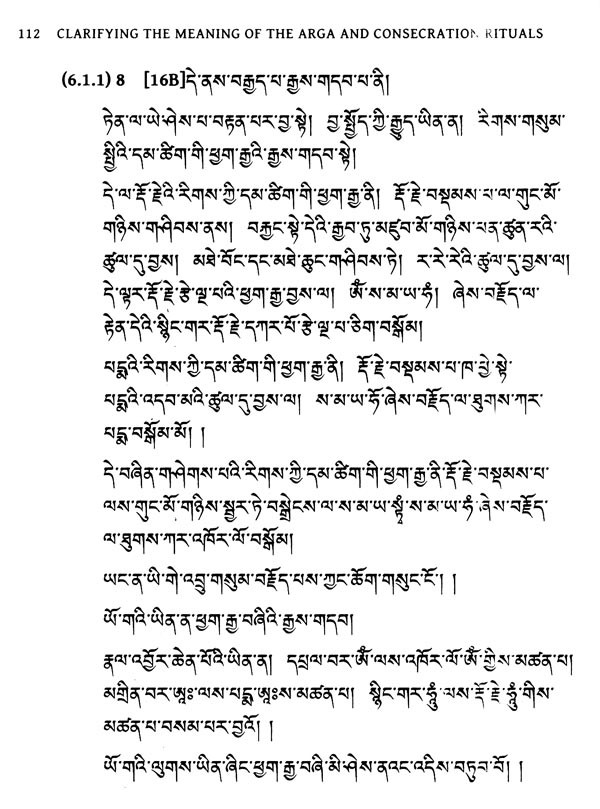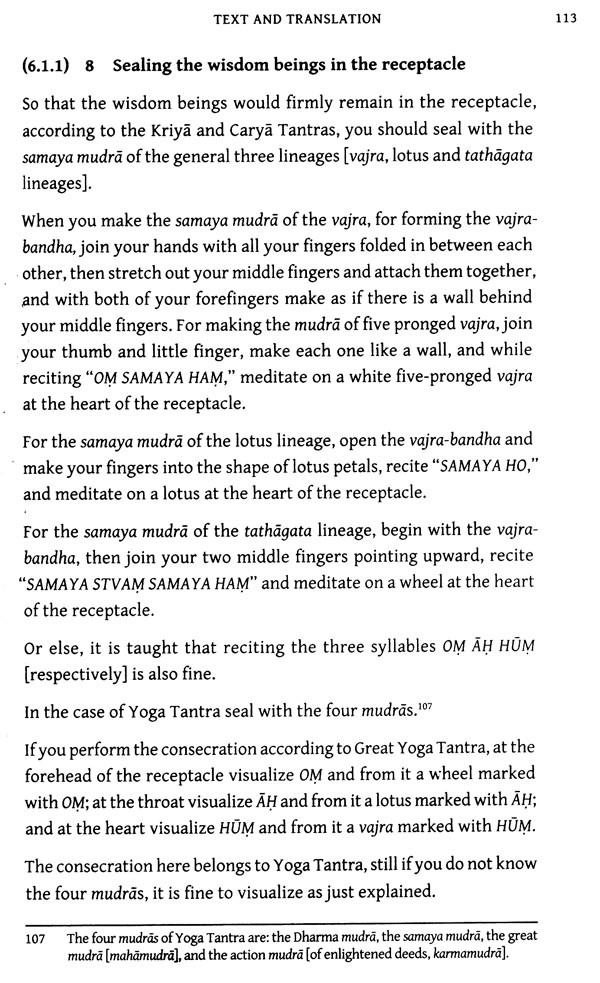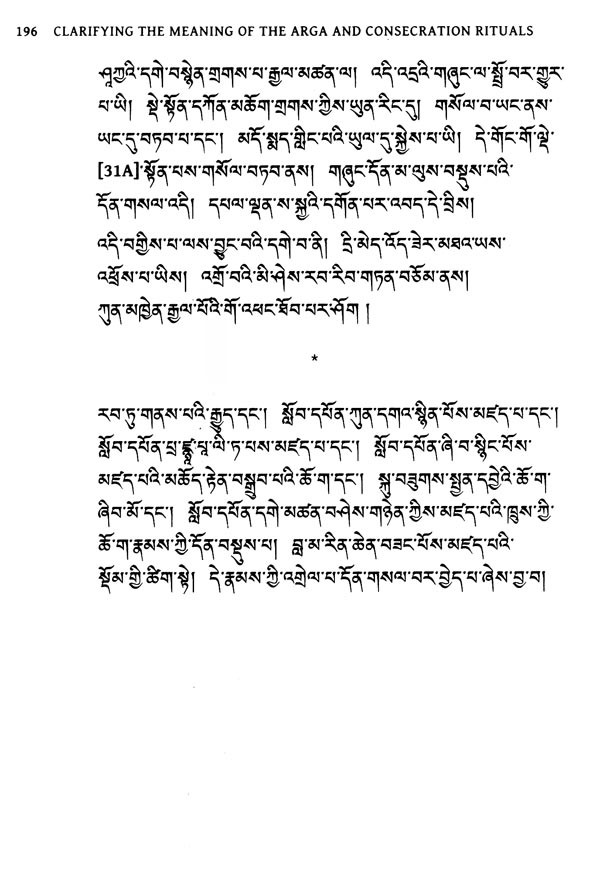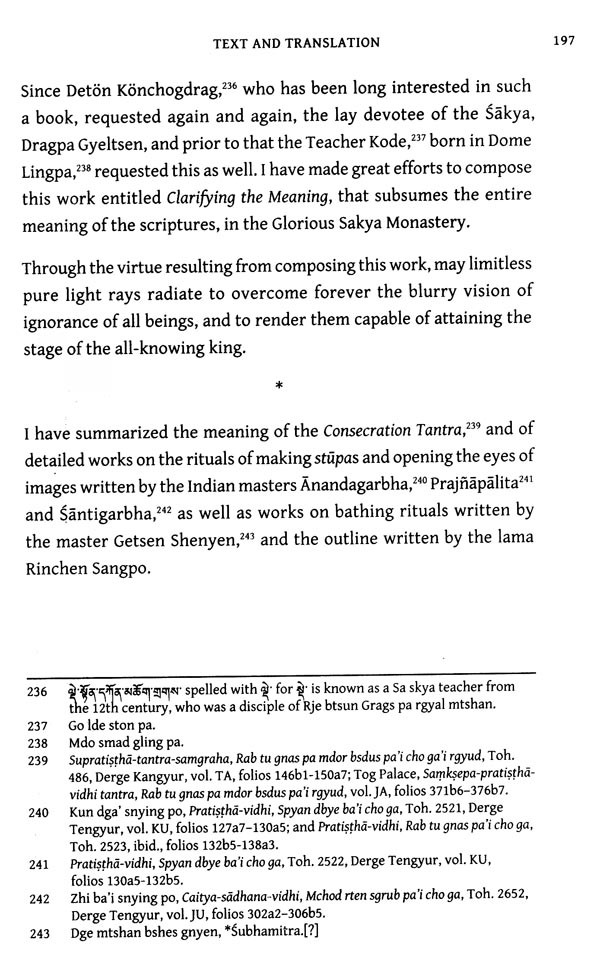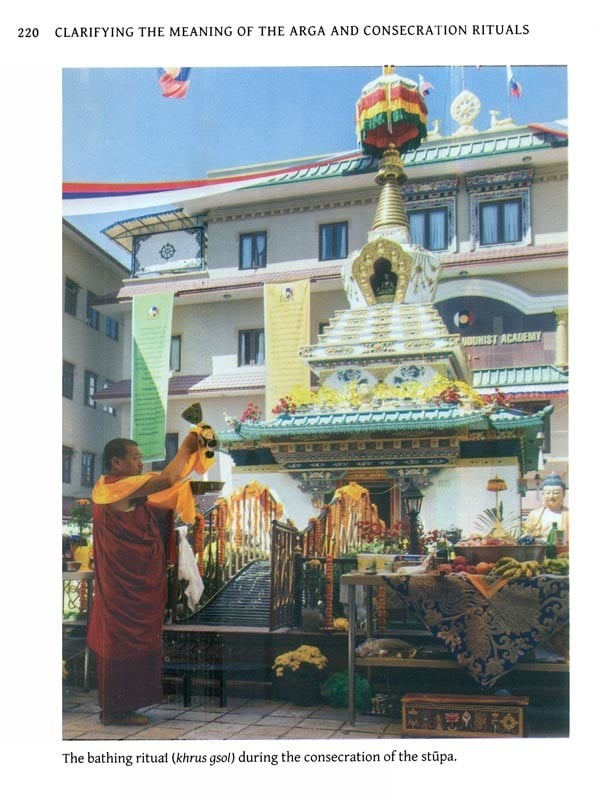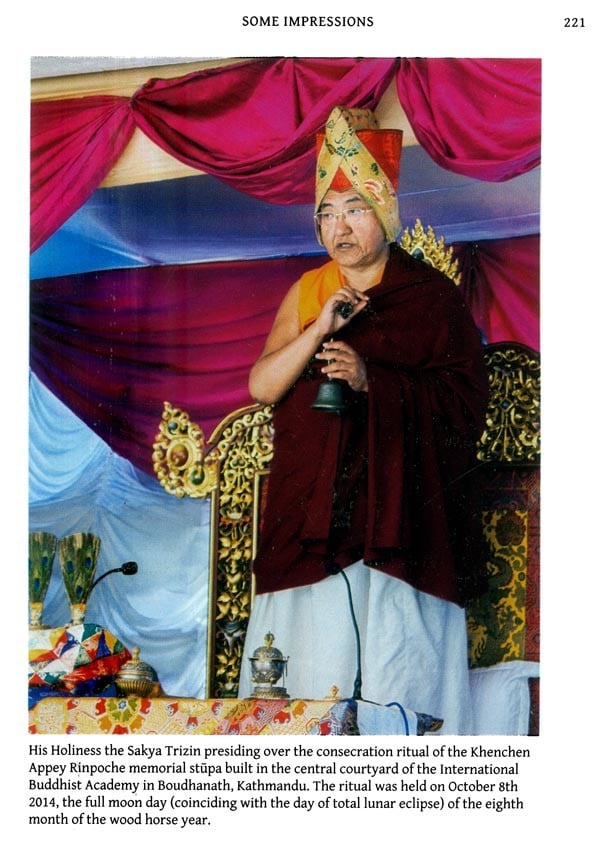
Clarifying The Meaning Of The Argo And Consecration Rituals
Book Specification
| Item Code: | AZG882 |
| Author: | Jetsun Dragpa Gyaltsen |
| Publisher: | Vajra Books, Nepal |
| Language: | TIBETAN TEXT WITH ENGLISH TRANSLATION |
| Edition: | 2015 |
| ISBN: | 9789937623490 |
| Pages: | 222 (Throughout Color Illustrations) |
| Cover: | PAPERBACK |
| Other Details | 8.50x5.50 inch |
| Weight | 220 gm |
Book Description
Among Dragpa Gyaltsen's many writings, his explanation of the arga and consecration rituals represents an important milestone in this genre of literature, being one of the earliest and at the same time most influential treatments of this subject. This publication contains the Tibetan original, translated and introduced by Yael Bentor.
One of the means common to all traditions is the construction of representations of the enlightened body, speech and mind. Connecting with these representations, on any level of experience, establishes an important connection between a person and his or her fundamental potential for full awakening or buddha nature. It opens the door to profound experiences which have the power to reveal the nature of the enlightened state. In the Vajrayana, the construction of representations of enlightenment is followed by elaborate rituals of consecration. These rituals are another set of skilful means used to activate the spiritual power of these representations by inviting wisdom beings to permanently reside in them. Once consecrated, such representations are therefore considered to be not mere symbols but actual forms of enlightenment and thus worthy of receiving offerings and being venerated.
The text translated by Yael Bentor for this publication is of particular importance to us as it was composed by one of the founders of our tradition, Jetsün Dragpa Gyaltsen (1147-1216), and represents one of the earliest scriptures of this genre of literature on consecration rituals.
The Tibetan word translated as consecration, rabné, like the Sanskrit pratistha, carries multiple meanings including standing firmly. steadfastness, stability while an important meaning of the related verb is to establish. In the case of consecration this verb does not refer to the receptacle, but to the Buddhas established in the receptacle and to their firmly remaining in it as long as samsara lasts.
Our author Jetsün Dragpa Gyaltsen explains why Buddhas are established in stūpas or images. While reading his explanation please bear in mind that the word translated here as consecration connotes the meanings establishing and firm remaining as well.
**Contents and Sample Pages**
